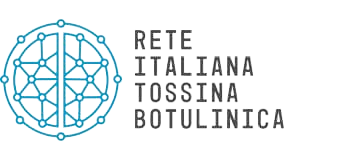In the ever-changing world of technology, choosing the right technology stack for your projects is a crucial decision. A well-designed technology stack can make the difference between a successful project and a failed one. In this article, we'll explore the fundamental concepts of a technology stack, the factors to consider when choosing one, and some of the best technology stacks available today.
What is a Technology Stack?
A technology stack, also known as a development stack or software stack, is a set of technologies, programming languages, libraries, and frameworks used to develop an application or software system. Choosing a particular stack depends on your project's specific needs, desired scalability, compatibility, and other key factors.
A good technology stack should be able to meet the current and future needs of your project. It must be efficient, secure and supported by an active community of developers.
Factors to Consider When Choosing a Technology Stack
Before diving into selecting a technology stack, it's important to consider several key factors:
1. Purpose of the Project
The first step in choosing a technology stack is to fully understand your project. What is the purpose of the project? What are the main objectives? These questions will help you define the technical and functional requirements of your stack.
2. Pre-existing knowledge
Your knowledge and the team's experience are key. Using a stack that you're already familiar with or that your team knows well can speed up development and reduce risk.
3. Scalability
Consider whether your project requires scalability. If you expect a significant increase in traffic or database size over time, it's critical to choose a stack that can handle these growing needs without issue.
4. Community and Support
A technology stack must be supported by an active community of developers. This ensures there are resources and support available when you need it.
5. Security
Safety is of primary importance. Make sure your technology stack has good security practices and is subject to frequent updates to address new threats.
6. Costs
Evaluate the costs associated with adopting a technology stack. This includes not only software licenses, but also operational, maintenance and training costs.
The Best Technology Stacks
Now that you have an overview of the factors to consider, let's look at some of the best tech stacks available today:
1. MEAN Stack
The MEAN Stack is an acronym representing four main technologies: MongoDB (a NoSQL database), Express.js (a web application development framework), Angular (a front-end framework), and Node.js (a JavaScript runtime server). This stack is widely used for developing modern and single-page web applications.
Advantages:
- Use of JavaScript on both server and client sides.
- Scalable and efficient.
- Active community and many learning resources.
Disadvantages:
- Not suitable for all types of projects.
- Requires good knowledge of JavaScript.
2. LAMP Stack
The LAMP Stack is another acronym representing Linux (the operating system), Apache (the web server), MySQL (the relational database management system), and PHP (a scripting language for server-side programming). This stack was one of the first to be used for web development and remains popular today.
Advantages:
- Wide adoption and community support.
- Reliability and safety.
- Suitable for developing dynamic websites.
Disadvantages:
- Not optimized for modern, single-page web applications.
- PHP can be considered less modern than other programming languages.
3. MERN Stack
The MERN Stack is similar to the MEAN Stack, but replaces Angular with React as the front-end framework. This stack is particularly suitable for developing dynamic and responsive web applications.
Advantages:
- Use of JavaScript on both server and client sides.
- React is highly popular and adopted.
- Scalable and efficient.
Disadvantages:
- Requires good knowledge of JavaScript.
- Not suitable for all types of projects.
4. JAMstack
The JAMstack is a development philosophy that is based on three main concepts: JavaScript, API and Markup. Instead of a single technology stack, the JAMstack promotes the use of third-party services to provide dynamic functionality, while static markup is pre-rendered.
Advantages:
- Safe and fast.
- Easy to climb.
- Suitable for static websites and web applications.
Disadvantages:
- It may require a learning curve to adopt the JAMstack philosophy.
- Not suitable for all applications.
5. Serverless Stack
The Serverless Stack is based on cloud services such as AWS Lambda, Azure Functions and Google Cloud Functions. This stack allows developers to write code without having to worry about the underlying infrastructure.
Advantages:
- Automatically scalable.
- Reduction of operating costs.
- Suitable for highly distributed applications.
Disadvantages:
- May not be suitable for all types of projects.
- Complexity in implementation.
Conclusion
Choosing the best technology stack for your projects is a crucial decision that requires careful evaluation of your requirements, your team's capabilities, and your project's needs. Each stack has its advantages and disadvantages, and the choice depends on specific factors. Be sure to consider scalability, security, cost, and community support aspects.
Remember that the world of technology is constantly evolving, and what is considered the best stack today may not be the best stack tomorrow. Stay up to date on trends and be willing to adapt your technology stack when necessary to ensure the success of your projects.





















